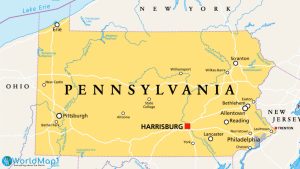Canada is located in North America, above the United States. It is the second largest country in the world in terms of land area.
Geography: Canada is the second largest country in the world, with a diverse range of landscapes including mountains, forests, lakes and rivers. It has a long coastline along the Atlantic, Pacific and Arctic oceans.
Where is the Canada in the World?
Demographics: Canada is a multicultural country, with a population of around 37 million people. The majority of the population is of European descent, with significant populations of Indigenous peoples and immigrants from around the world. English and French are the official languages, and there are also many other languages spoken throughout the country.
Population: Canada has a population of around 37 million people. The population is concentrated in the southern regions of the country, with the majority of the population living in urban areas.
Economy: Canada has a developed, mixed economy that is heavily reliant on natural resources, particularly oil and gas. The country is also known for its strong agricultural and forestry sectors, as well as a growing technology and service sector. Canada is one of the world’s wealthiest countries and has a high standard of living.
How many territories in Canada
Canada has three territories: the Northwest Territories, Nunavut, and Yukon. These territories are located in the northern part of the country and have smaller populations compared to the provinces. They have a degree of autonomy, but they also have fewer powers than provinces and rely on the federal government for certain services. The Northwest Territories is the largest territory, followed by Nunavut and then Yukon.
Learn more about Canada
The largest cities in Canada are:
Here are the 10 most populous cities in Canada with their population figures:
- Toronto, Ontario – 2,731,571
- Montreal, Quebec – 1,704,694
- Vancouver, British Columbia – 647,805
- Calgary, Alberta – 1,239,220
- Ottawa, Ontario – 934,243
- Edmonton, Alberta – 932,546
- Quebec City, Quebec – 531,902
- Winnipeg, Manitoba – 778,489
- Hamilton, Ontario – 721,053
- Kitchener, Ontario – 568,059
Author: Arif Cagrici – Head of Digital






